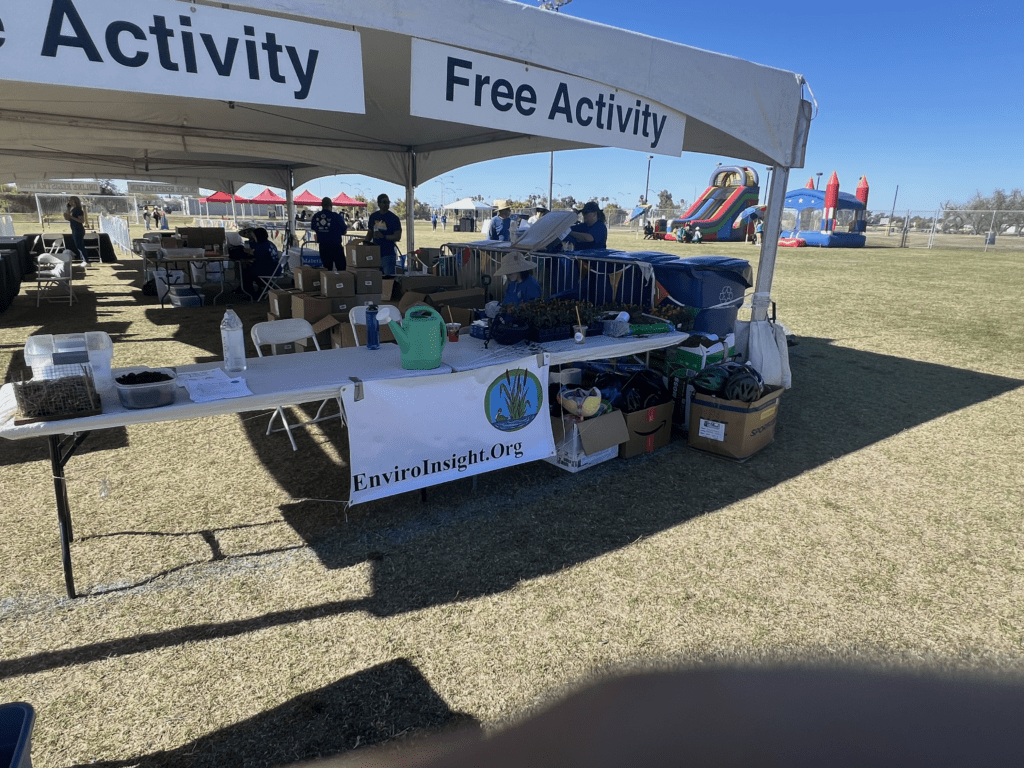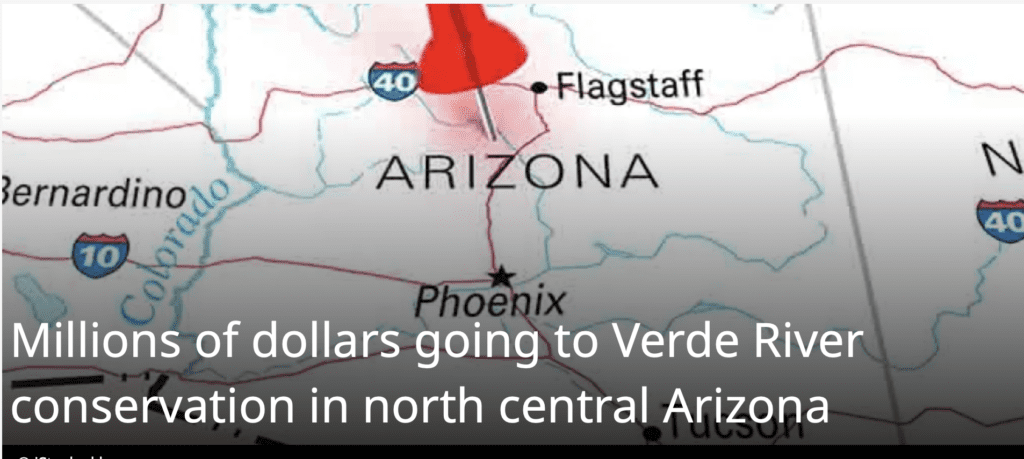Daniel Salzler No. 1250 EnviroInsight.org Four Items April 19, 2024
—————Feel Free To Pass This Along To Others——————
If your watershed is doing something you would like others to know about, or you know
of something others can benefit from, let me know and I will place it in this Information .
If you want to be removed from the distribution list, please let me know.
Please note that all meetings listed are open.
Enhance your viewing by downloading the pdf file to view photos, etc.
The attached is all about improving life in the watershed through knowledge.
If you want to be removed from the distribution list,
please let me know. Please note that all meetings listed are open.
Check our website at EnviroInsight.org
1. Scientists Are Studying the Funky Environmental Impacts of Eclipses—From Grid Disruptions to Unusual Animal Behavior. On April 8th, a large chunk of the U.S caught a glimpse of the solar eclipse.
People traveled from around the country and world into the “path of totality” for this rare celestial event. Analysts projected that spending surrounding the total solar eclipse—such as booking hotels or dining out—could reach as high as as $6 billion. That’s about $300 million more than the Taylor Swift’s Eras Tour brought in for local economies within her path of totality during 2023, reported the Morning Brew.
For others, the eclipse offered a unique opportunity to study the environmental impacts of this temporary darkness—from unusual animal behaviors to solar power disruptions.
Solar Shrouding: For energy experts, a natural first place to look at eclipse impacts is the resource that relies on sunshine: solar. Since the U.S.’s last total eclipse in 2017, solar installations in the country have increased threefold, according to the National Renewable Energy Laboratory (NREL). Before yesterday’s eclipse, researchers at NREL used models to predict a decrease of about 35.3 gigawatt hours in solar energy across the country during the sun-blocking event (other estimates projected around 39.9 GWh).

While the overall impact has not yet been confirmed, losses were particularly high in Texas and “a swath of the middle of the country from Minnesota to Indiana to Louisiana,” writes Matthew Zeitlin for Heatmap. To prevent widespread blackouts, grid operators likely filled in the gaps using hydropower and natural gas, according to Solcast, a solar forecasting company.
You may be wondering why this matters if total eclipses are so rare. Jin Tan, a principal investigator at NREL has the answer: “The methodology from NREL’s eclipse study is applicable to any extreme weather event.”
This includes cloudy storms and wildfires, which spread smoke across vast expanses of the sky and reduce solar output by as much as 50 percent, reports Bloomberg. Some of these extreme weather events actually eclipsed the eclipse in parts of the country, including a major celestial festival in Texas that ended early due to forecasts of high winds, tornado activity, hail and thunderstorms.
Animal Oddities: Throughout history, citizen scientists have documented a variety of quirky behaviors from animals during eclipses—from honey bees swarming to nocturnal birds tweeting their tunes in the middle of the day. This year is no exception: Zookeepers at the Fort Worth Zoo in Texas saw many animals seemingly turning in early for the night by walking toward their barns and sleeping quarters as temporary darkness descended, reports CBS News.
The April edition of Time Magazine reported that perhaps one of the more interesting observations was made during the May 30, 1984 eclipse. Researchers observed that a captive group of chimpanzees at the Yerkes Primate Research Center on the Campus of Emery University, Georgia, moved to their highest point of their structure in their enclosure and turned their faces toward the sun and moon. When the skies began to brighten, the chimps returned to lower point in their structure and resumed pre-eclipse activities.
2. EPA Sets Bold New Limits On ‘Forever Chemicals’ In Drinking Water.
WASHINGTON – Today the Environmental Protection Agency finalized unprecedented new limits on the toxic “forever chemicals” known as PFAS as a way to tackle drinking water contamination. The proposal targets six PFAS – PFOA, PFOS, GenX, PFBS, PFNA and PFHxS. These are among the most protective health limits on PFAS in drinking water in the world.
The limits, known as maximum contaminant levels or MCLs, are the highest level of a contaminant allowed in drinking water. In addition to weighing health, these limits take into consideration water treatment costs and feasibility. The MCLs announced are: 4 parts per trillion, or ppt, for PFOA and PFOS and 10 parts per trillion for GenX, PFNA and PFHxS. The EPA also set a hazard index, a tool the agency uses to address cumulative risks from mixtures of chemicals, for GenX, PFBS, PFNA and PFHxS.
“More than 200 million Americans could have PFAS in their tap water and for decades Americans have been exposed to toxic ‘forever chemicals’ with no oversight from their government. That’s because for generations, PFAS chemicals slid off of every federal environmental law like a fried egg off a Teflon pan – until Joe Biden came along,” said Environmental Working Group President Ken Cook. “Today’s announcement of robust, health protective legal limits on PFAS in tap water will finally give tens of millions of Americans the protection they should have had decades ago.
“It is the most consequential decision to regulate drinking water in 30 years. We commend EPA Administrator Michael Regan for his tireless leadership to make this decision a reality, and Council on Environmental Quality Chair Brenda Mallory for making sure PFAS is tackled with the ‘whole of government’ approach President Biden promised,” said Cook.
“These new limits confirm that these chemicals are toxic at very low levels,” said Olga Naidenko, Ph.D., vice president of investigations at the EWG. “While these six PFAS are some of the most well-studied PFAS, nearly every week there are new scientific studies documenting an increasing number of ways that the whole class of PFAS could damage our bodies and threaten our health.”
“Filtering out these six PFAS to meet the EPA’s new limits will require utilities to take steps that will ultimately reduce exposure to all PFAS, as well as other toxic chemicals in drinking water,” she added.
The EPA also set a maximum contaminant level goal, or MCLG, for PFOA and PFOS of zero, based on identified cancer risks. An MCLG is the maximum level of a contaminant in drinking water at which the EPA determines that no adverse health effects would occur. Whenever there is an identified cancer risk, the MCLG is set at zero. The EPA set MCLGs of 10 ppt for GenX, PFNA, and PFHxS.
“Today’s announcement by the EPA is historic,” said Melanie Benesh, vice president for government affairs at EWG. “These are the first new chemicals the EPA has regulated under the 1996 amendments to the Safe Drinking Water Act and these new protections are critically important.
\
“Because PFAS are toxic in very low amounts, it’s hard to overstate the public health impact of these new rules. Getting these PFAS out of our drinking water will prevent thousands of deaths and tens of thousands of cases of serious health harms like cardiovascular disease, bladder cancer, strokes, heart attacks and reproductive harms like preeclampsia and low birth weights. These new limits will save lives,” said Benesh.
For decades, 3M and DuPont hid the health harms of PFAS from regulators, workers and neighboring communities. PFAS have been linked to cancer, reproductive harm, immune system damage and other serious health problems, (link is external)even at low levels. The EPA estimates(link is external) that these new limits will result in 1,232 fewer birth-weight-related infant deaths; 1,928 fewer kidney cancer deaths; 1,844 fewer bladder cancer deaths; and 3,584 fewer deaths from cardiovascular disease.
“Today we celebrate a huge – and long overdue – victory for public health in this country. The EPA is finally moving forward to protect drinking water across the United States by adopting federally enforceable limits on some of the most toxic, persistent and bioaccumulative chemicals ever found in our nation’s drinking water supply,” said Rob Bilott, the attorney who uncovered the widespread presence of PFAS chemicals and whose story is told in his book “Exposure(link is external)” and portrayed in the movie “Dark Waters.”
The EPA health risk assessment for the LHAs for the first time included studies on people, including children, and showed that health harms can be caused by PFAS exposure at levels much lower than the EPA’s previous health guideline of 70 ppt for PFOA and PFOS in water. These risk assessments and the newer LHAs prompted the EPA to propose historic limits on these six PFAS in March 2023.
“After decades of delay, President Biden’s EPA has finally delivered a PFAS drinking water standard that will protect all of us,” said activist and actor Mark Ruffalo. “President Biden and his team pledged to make PFAS a priority and he has delivered. No administration has done more to address the urgent threat posed by these toxic forever chemicals.”
“My message to polluters is simple: After poisoning your workers and neighbors for decades, we are finally making our public health, not your profits, our top priority. My message to communities devastated by PFAS pollution is equally simple: Your voices have been heard,” added Ruffalo.
PFAS have been found in the drinking water and groundwater of more than 5,000 communities. But the true scale of contamination is likely much greater.
EWG estimates there could be nearly 30,000 industrial polluters releasing PFAS into the environment, including into sources of drinking water. Restricting industrial discharges will reduce the amount of PFAS that drinking water utilities must treat. The EPA was supposed to issue a proposed rule limiting discharges of PFAS from certain industries last summer, but has not done so yet.
“Today’s announcement is an enormous public health victory and will lead to much safer drinking water coming out of your tap. But polluters must also do their part and clean up their own mess and stop PFAS contamination at the source,” said Scott Faber, EWG’s senior vice president of government affairs.
“Now that the EPA has finalized these limits, they should also move quickly to regulate industrial discharges of PFAS into the air and water. Utilities should also reject PFAS-laden wastewater from polluters and require them to treat it themselves. This will help ensure that polluters instead of ratepayers pay to keep our water safe,” Faber added.
Drinking water utilities will be required to test for three years and then have an additional two years to comply with the new limits on PFAS in drinking water. Congress provided funding in the 2021 bipartisan infrastructure law to address PFAS in drinking water. PFAS manufacturers have also recently settled lawsuits with water utilities for billions of dollars.
Because of current EPA rules, most water utilities will be required to test drinking water for 29 PFAS between 2023 and 2025. That effort will provide more insight into the extent of contamination from those chemicals, which may prompt regulation of other compounds. The EPA has already released some data from the monitoring, which is included in EWG’s PFAS contamination map.
Although the new MCLs are limited to six notorious PFAS, treatment technologies installed to comply with the MCL mean other PFAS will effectively be treated too, which will reduce total PFAS levels in drinking water.
The Environmental Working Group (EWG) is a nonprofit, non-partisan organization that empowers people to live healthier lives in a healthier environment. Through research, advocacy and unique education tools, EWG drives consumer choice and civic action.
3.EnviroInsight.Org Makes Glendale Family Bike Ride A BIG Deal. Glendale, AZ based EnviroInsight, an environmental Non-Profit group showed it’s stuff at the April 14th Glendale Family Bike Ride.
EnviroInsight had three main educational learning areas on tables at the event.

One of the more popular activities was where bicycle riders could turn in their old bicycle helmets and get a new free helmet from the City of Glendale. The old helmet was then handed over to EnviroInsight where individuals were shown how to make a hanging basket from the helmet. And then could take their creation home with them.
EnviroInsight also spent a lot of time educating and

demonstrating to the public how to compost vegetative material from the yard and the kitchen.
The third area of education was an area that demonstrated recycling, repurposing, reusing. Individuals were challenged by the quiz board and it they did okay, they received a sticker. If they did really well, the were given a very nice pen. A representative from the City of Glendale Solid Waste Department took the quiz and was pleased to take home a shiny new pen.
The City reported that 1,000 riders registered for the 7, 15 and 23 mile rides. Every type of bicycle you might imagine was there. It was an amazing event and EnviroInsight.org will return next year. EnviroInsight is willing to come to your town to conduct a similar program. Just contact the editor of this newsletter.
4. Millions of Dollars Going To Verde River Conservation in North Central Arizona (Arizona News Connection) More than $11 million in federal grant money will go to improve land and water conservation in the upper Verde River Watershed and Big Chino Grasslands in north central Arizona.
The grant requires a 50 percent non-federal match, which The Nature Conservancy Arizona and partners will provide – bringing the total to $23 million.

Kimberly Schonek – Arizona water director for the conservancy – said the Verde River is one of the state’s last free-flowing rivers, and calls it a “critical water supply” for not only the Phoenix metro area but for the biodiversity around the river, which starts just north of Prescott.
She said the conservancy in Arizona will be using the money to purchase easements from willing landowners to ensure land preservation and limit groundwater use.
“The landowner will continue to ranch and farm their property into the future,” said Schonek, “but it’ll restrict that ability for them to develop it, and what that does is keep the water use on the land what it is now.”
Schonek said as Arizona thinks about its future, it’s important to limit the amount of water use in what she calls a “critical area.”
She added that her organization has been enacting conservation easements and other measures along the Verde River since 2012.
Schonek said no landowners are required to participate, but adds many find value in being compensated and reinvesting those funds onto their properties.
Schonek said over the last 20-years, with drought, they’ve noticed river levels drop – and have also seen land usage around the river change.
She added that while certain areas of the river have less flow, others are now experiencing more water due to the collaborative work the conservancy and agricultural partners have fostered.
“So the future looks good, so long as the community continues to engage, and everybody has a part to play,” said Schonek. “And so we are really excited and optimistic to continue partnering with rural communities and agriculture in protecting this river for the future.”
Schonek said it is exciting to see this level of investment as they’ve been working on conservation efforts for decades.
She added that this is by the far the largest amount of money that’ll be dedicated to the Verde River. Source: Kiowa County Pressv(Southeast Colorado News
Copyright : EnviroInsight.org
